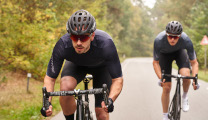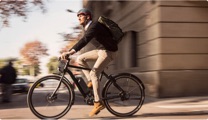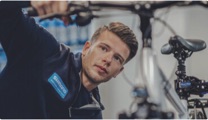From the very beginning, we built mountain bikes to take us further. To explore new trails. To discover new experiences. To push the boundaries of cycling, into unknown pedaling territory. Just as knobby tires, suspension and disc brakes took all of us deeper into the unknown, pedal assist e-MTBs have brought more of us along for the ride.
The following adventure is an excerpt from Further, Shimano’s finest collection of e-MTB tales from around the globe. These stories are told to inspire us to push our own boundaries of action, adventure and advocacy, just a little bit further with these powerful new rides.
Story By James Stout / Photos by Kevin Fickling
Paul and Eddy are in their happy place. A place that today finds them looking over Lake Hodges, in San Diego County, watching the sun dip toward the Pacific Ocean. It’s not a long way from the parking lot, but it’s far enough to rest and appreciate the view. It’s one hell of a view, the sort of thing they put on tourist brochures that bring thousands of people to Southern California every month in the summer. But right now, the vista belongs to two guys on bikes chatting about pedals, dinner and the best trail back to the car. Paul Basagoitia and Eddy King have both survived spinal cord injuries, both of which were sustained riding. But now they’re back on their bikes, using e-MTBs as tools to continue healing, to keep moving forward.
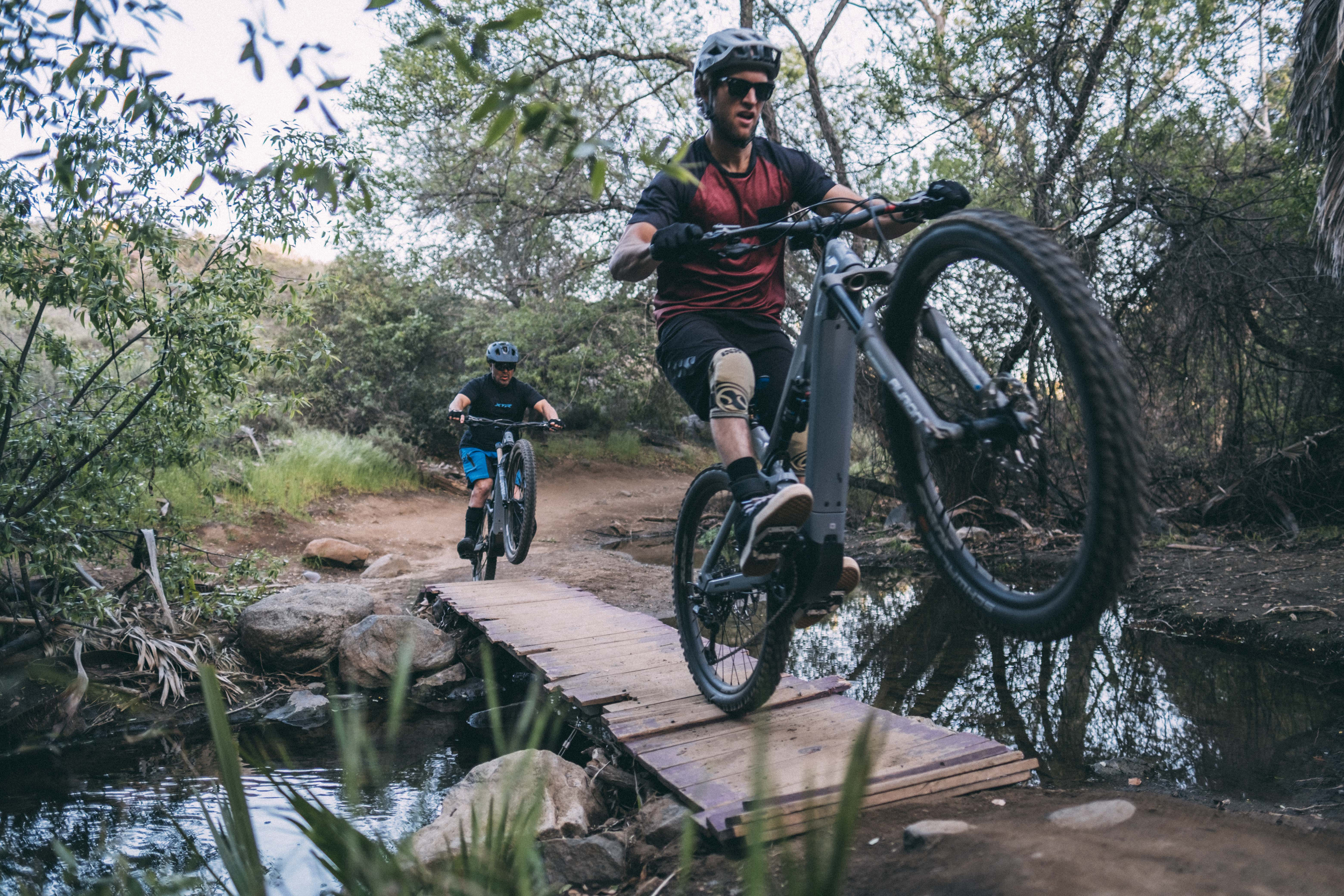
Paul and Eddy didn’t grow up biking together, in fact they have only ridden with one another a handful of times. But in a strange way, they’ve helped each other without even knowing it. Paul grew up admiring Eddy’s brother Mike King. Eddy and Mike were one of the most respected combinations in the heyday of ‘80’s and ‘90’s BMX. In fact, both are hall of famers. Eddy came onto the scene first, quickly graduating from his banana seat Schwinn to a proper BMX bike as his snap out of the gate propelled him to a national-level career. He doesn’t seem to dwell on his past successes though and humbly self reflects, “I wasn’t on no one’s bedroom wall.”
Eddy’s brother Mike, to be sure, was on many bedroom walls after he won a series of international BMX world titles in the mid- 1980’s. One of those bedroom walls belonged to Paul. By the time the youngster was old enough to ride, and to pull photos out of bike magazines, “Mikey” was racing bigger wheels as a downhill mountain biker. When 18-yearold Paul burst onto the scene at the first-ever Cranxwork in Whistler in 2004, Mikey was a year away from retirement, and Eddy had retired from professional racing.
Eddy took a long break from bikes after his BMX career ended. He was burnt out. But around 2013, Eddy tired of feeling overweight and unfit. He wanted to ride again and as soon as he did, the bug bit him. “I was racing cross country, and I got an enduro bike as well,” he told me in the parking lot of Hernandez Hideaway, a trailside Mexican spot that’s famous with local riders for its generous margaritas. He evengot a road bike. He recounted a ride up to Dana Point one weekend in 2013, “We were just motoring that day, and riding the road bike [makes] you so much stronger on the mountain bike.”

That ride to Dana Point sticks in his mind not just because of how much his legs hurt as he hit the steep climbs in the Orange County beach town. It’s what happened the next weekend that made the outing so significant.
He set off with his friend to the bike park at Big Bear. They wanted to hit some jumps and ride the lifts before winter closed the trails for the season. They were having fun, and Eddy’s years of BMX experience served him well. But then, on a pretty innocuous tabletop, Eddy crashed. The lip bucked him up too high, and he cleared the landing. The Big Bear jumps back then were notorious for that.
Eddy flew over the bars as he landed in the flats. It wasn’t an awful crash, especially for such an experienced rider, but it turned out to be a life changing one. “I would have walked away from it, but I had a Camelbak on and a shock pump in my pocket. The bladder pressed on my iPhone, and the iPhone pressed on my shock pump and broke the thoracic spine.” His friend pinched his feet, he couldn’t feel them. They loaded him up in a helicopter and flew him to the hospital. The doctors weren’t sure if he would ever walk again.
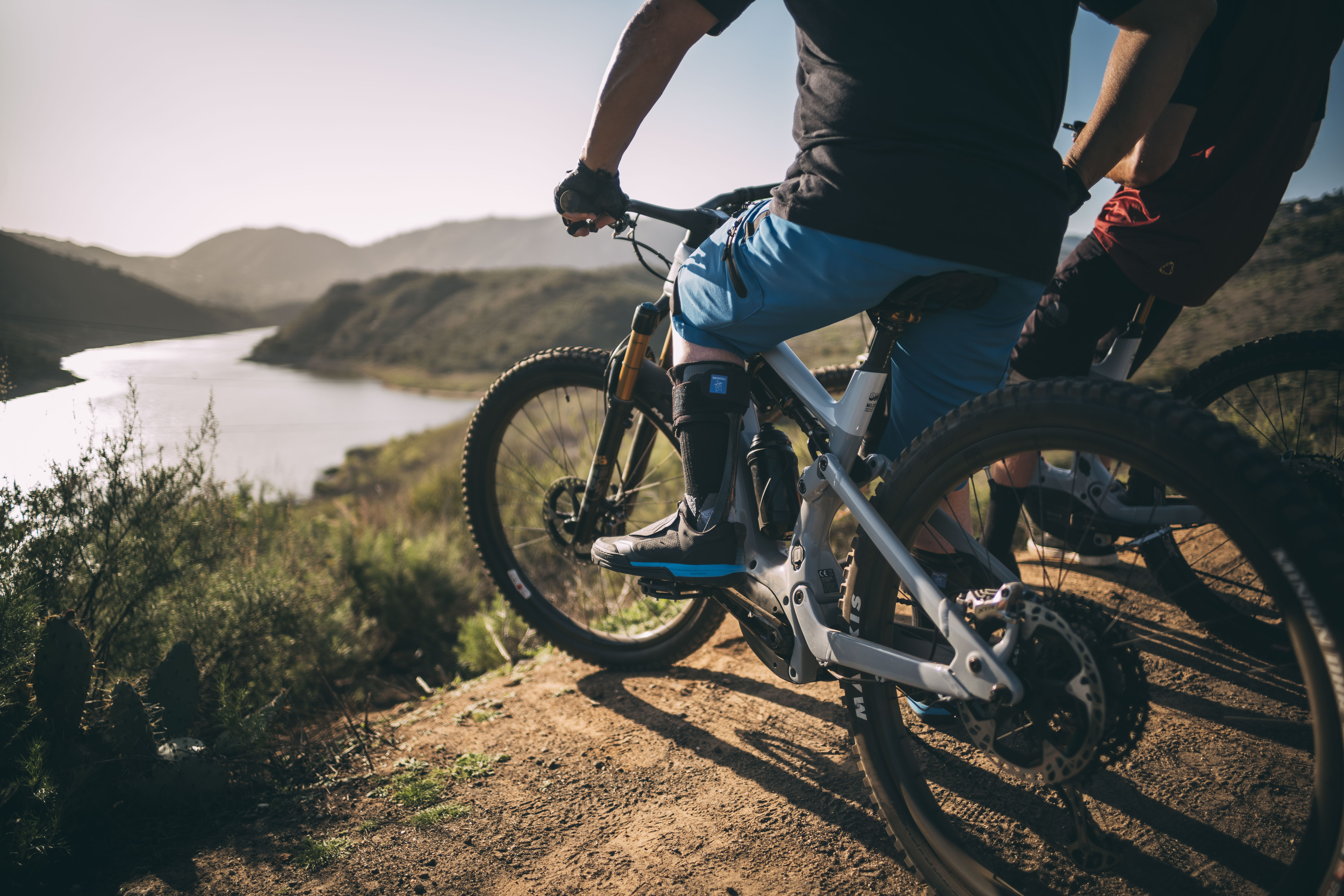
A few years later, on a very different ride at Redbull Rampage–the pinnacle of freeride mountain bike competition where riders send seemingly impossible lines down the desert cliffs of Virgin, Utah–Paul would have his own life-changing crash. It was 11 years after his breakout ride at Crankworx, and he had grown to become a legend in the sport. Even today, anybody who is anybody in freeride mountain biking grew up watching or riding with Paul Bas. They’ll probably tell you about the time he borrowed Cam Zink’s bike at Crankworx and pulled a backflip onto the last feature and a tailwhip off it. Until October 2015, it was this and the double backflip that defined Paul’s career.
Like Eddy’s, Paul’s crash wasn’t the biggest he’d ever had. “I’ve taken many harder slams in my career and walked away,” he told Red Bulletin in 2019, but this crash was different. The video is hard to watch. He’s on a great run stringing together technical BMX-style tricks on his big hit freeride bike. He launches off a 40-foot drop. It’s too fast, but he sticks the landing. Just as you’re reflecting on the amazing talent that it takes to land rubber side down after misjudging a four-story drop, Paul’s pedal catches some scrub. He flies off the bike and lands on his back. It looks like he’s just winded, but he doesn’t get up. As the medics carried Paul away on a stretcher, they asked him to give the cheering crowd a thumbs up to show he was ok. He wasn’t, and he didn’t.
Paul couldn’t feel his legs or his feet, and he knew something was wrong. He was rushed to St. George where he began a three month stint in a hospital. It turned out that he’d impacted his 12th vertebra, the lowest part of the thoracic spine, and it had shattered. Parts of it damaged his spinal cord. Doctors told him he wouldn’t walk, or even piss on his own. But Paul just wanted to ride his bike.
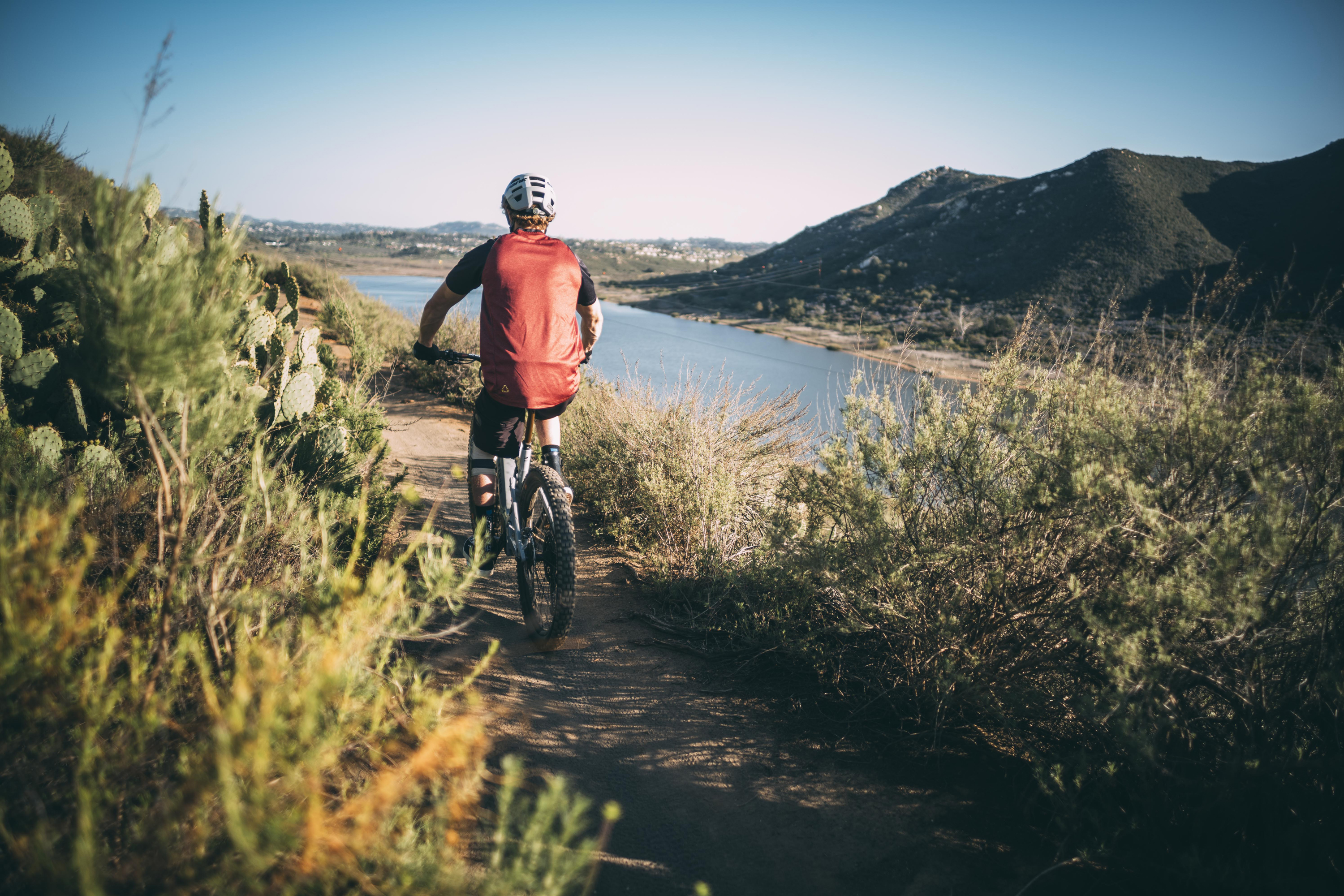
And so, he worked. He worked harder than he ever had before, just to get back to that first ride. Paul turned his trophy room into a gym and trained for up to six hours a day. He did far more than his doctors thought he should. But tiny twitches turned into small motions, which turned into slightly bigger movements. It took months of rehab, but he was ready to try riding a regular bike again. He climbed onto his bike in his driveway, and finally, in spite of the medical assessments, he started to roll again.
He rode the slight downhill toward Cam Zink’s house. The same Cam who loaned him a bike at that first Crankworx. The same Cam that he’d been riding with since they were kids.
As he rode down the hill, and felt the wind in his face, “I thought I was good to go” he remembers. “But then I got to a hill, and it was just like, no way.” He could ride again, but he had to stick to flatter trails and always worried about slowing down his friends.
The solution to these anxieties and challenges turned out to be sitting in his garage. It was an e-MTB. It had been there for months, but he’d been reluctant to build it up. It was heavier than the trail bikes he was used to, and he thought the frame looked “goofy.” But that first ride had changed something. It helped him remember how great riding felt, and he knew he’d be able to get up that hill with the help of a motor. So putting hesitations aside, he built up the e-bike, and it changed everything.
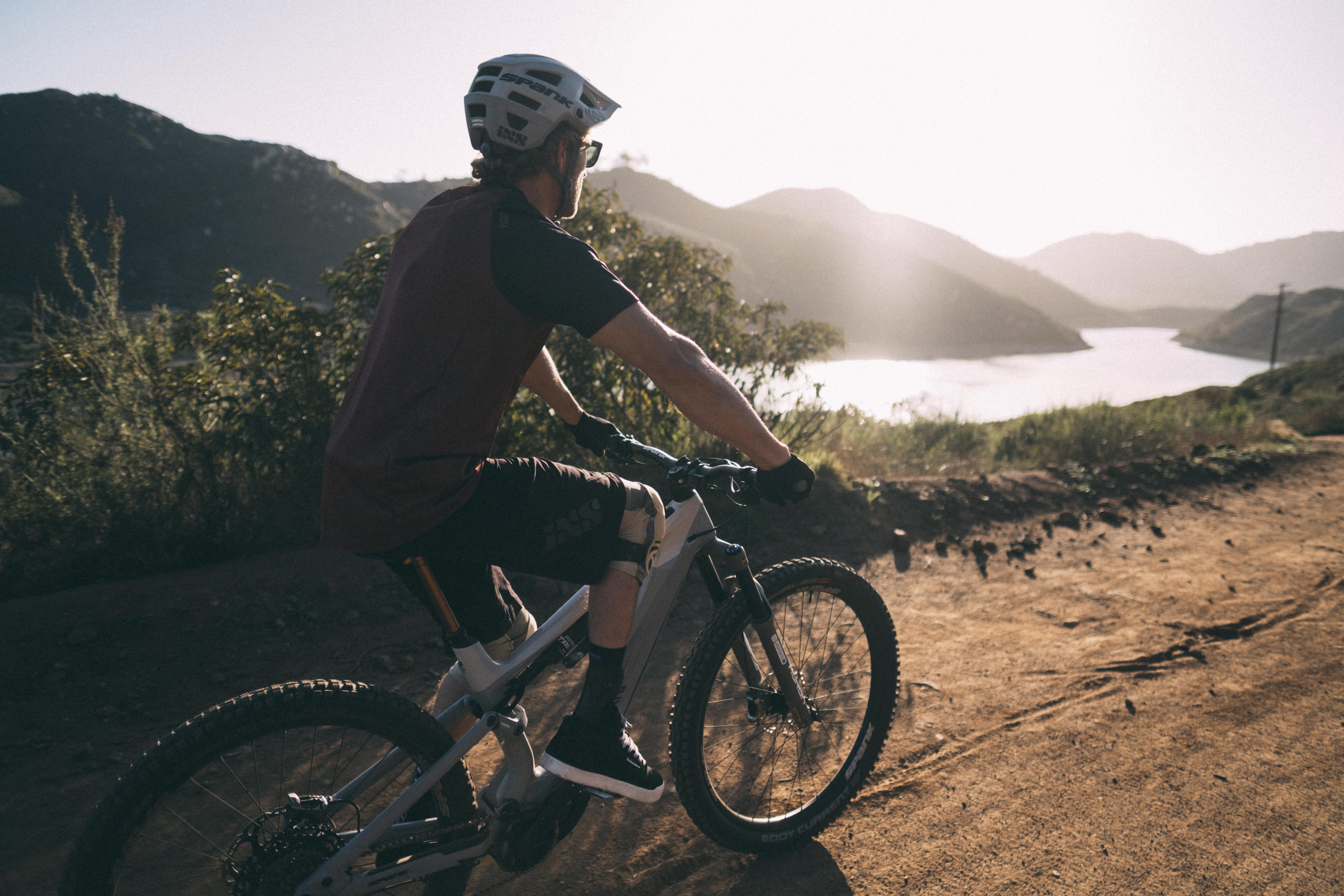
Suddenly he could ride hills. He didn’t have to worry about slowing down his friends. He was back to being able to enjoy the ride.
Eddy worries about his friends on rides too. He’s concerned that they can’t keep up with him. He rides an e-MTB all the time now. It helps him clear his mind and relax, get away from the stress of a busy life and find the release that comes from being fully immersed in a trail.
He’s such a believer that the license plates on his car read “E-BYKE”. The E referring to Eddy as well as electric. He’s still the same Eddy that he was back in the BMX days, he just has a bigger bike and a fancier car now. He tells me he only really rides with Cat 1 racers, something I can appreciate as he and Paul turn up the speed on a steep rocky climb. But it wasn’t always this way. Eddy moved back in with his mother in Arizona after his crash, and he hired a trainer to recover from the injury. Like Paul, he took the grit that made him a great rider and turned it into recovery. “I just hammered at it, like I would do anything else”.
After working hard for months, moving from a chair, to handrails, to crutches, and then canes, Eddy hopped on a beach cruiser. “I wasn’t sure if I was going to be that kid who tried to ride a bike and couldn’t balance” he says, “but it came back to me.”
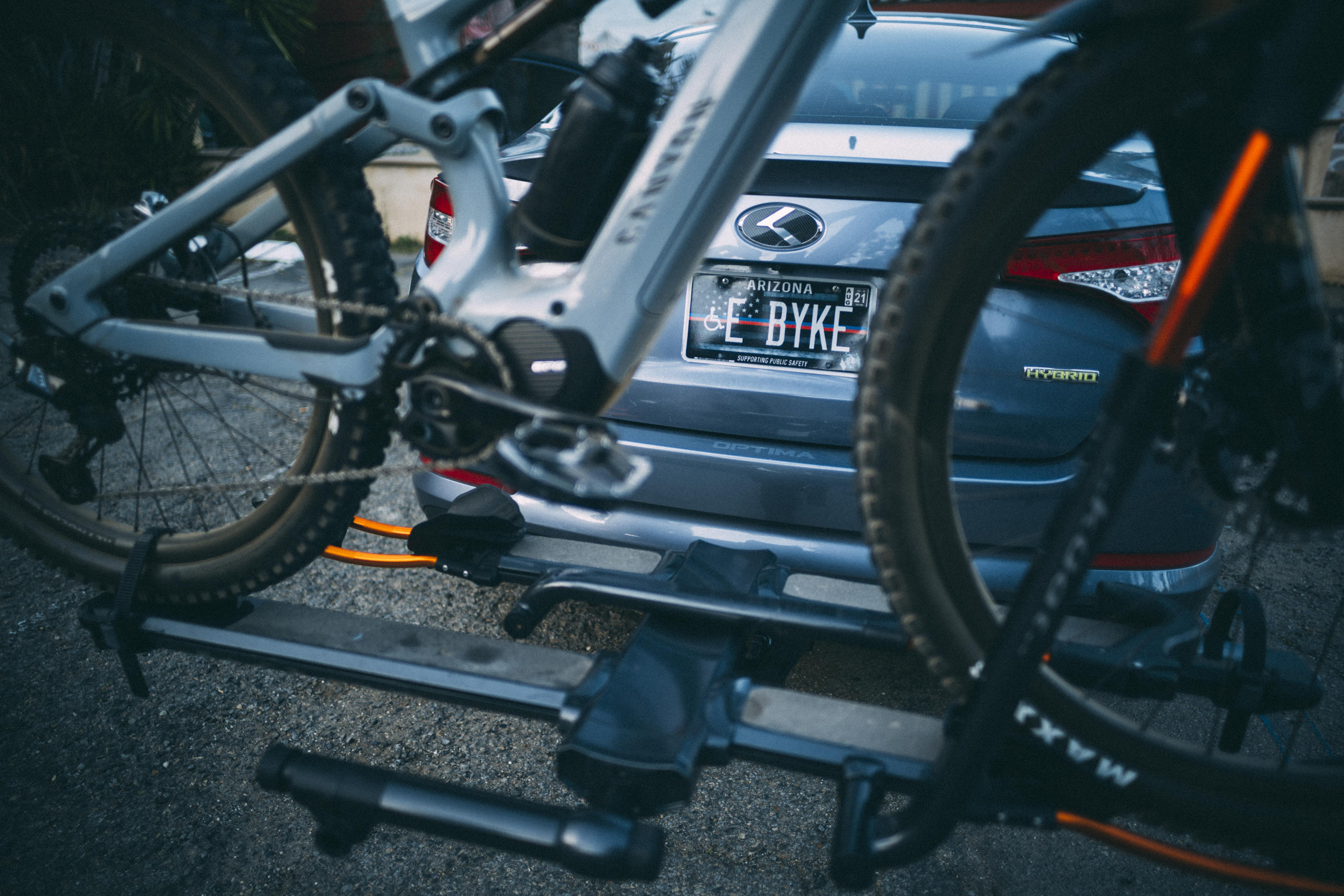
Like Paul, he found the e-assist was the tool he needed to heal physically and mentally from his accident. Eddy wanted the independence to ride on his own, and the e-MTB gave him that. “I don’t think I’d be going out on the trails and doing any of this stuff on a regular bike. It just wouldn’t be as much fun. I need that adaptive, assisted pedaling to get the extra miles in.”
But it isn’t just the bikes that helped these guys recover–it’s the overall riding community. Ever since Red Bull released the Emmy winning film about Paul, Any One Of Us, and Shimano produced a film about Eddy, Tools of Empowerment, they’ve become figureheads for surviving and thriving with spinal cord injuries. As we wait for the trail to clear, Paul tells me “I could open my DMs right now and there would be messages. It’s not just spinal cord injuries either, it’s depression, divorce...I have had people tell me that the film saved them from dying by suicide.”
That must feel pretty great, I say. Paul agrees that it does, and says he spends a lot of time connecting with people who have been hurt, including a mutual friend. But when he’s riding, he tries not to think about it. “I’m blessed to be out here, to have a second chance,” he says.
Although both of them aren’t daunted by trails that would leave most riders thinking twice, they have different approaches to the specific trails where they got hurt. Paul returns to Rampage every year, which is where I first saw him after his injury. The community of people who can ride the red cliffs of Virgin Utah is small, a select breed of talented, brave humans. The atmosphere in the riders’ area is of mutual respect that can only be garnered by those who’ve rolled lines oh so very close to oh so very precipitous edges. Paul fits right in there, and I’ve watched from a distance as he cheers and clenches right along with his crew as riders push the limits of bikes and bodies.
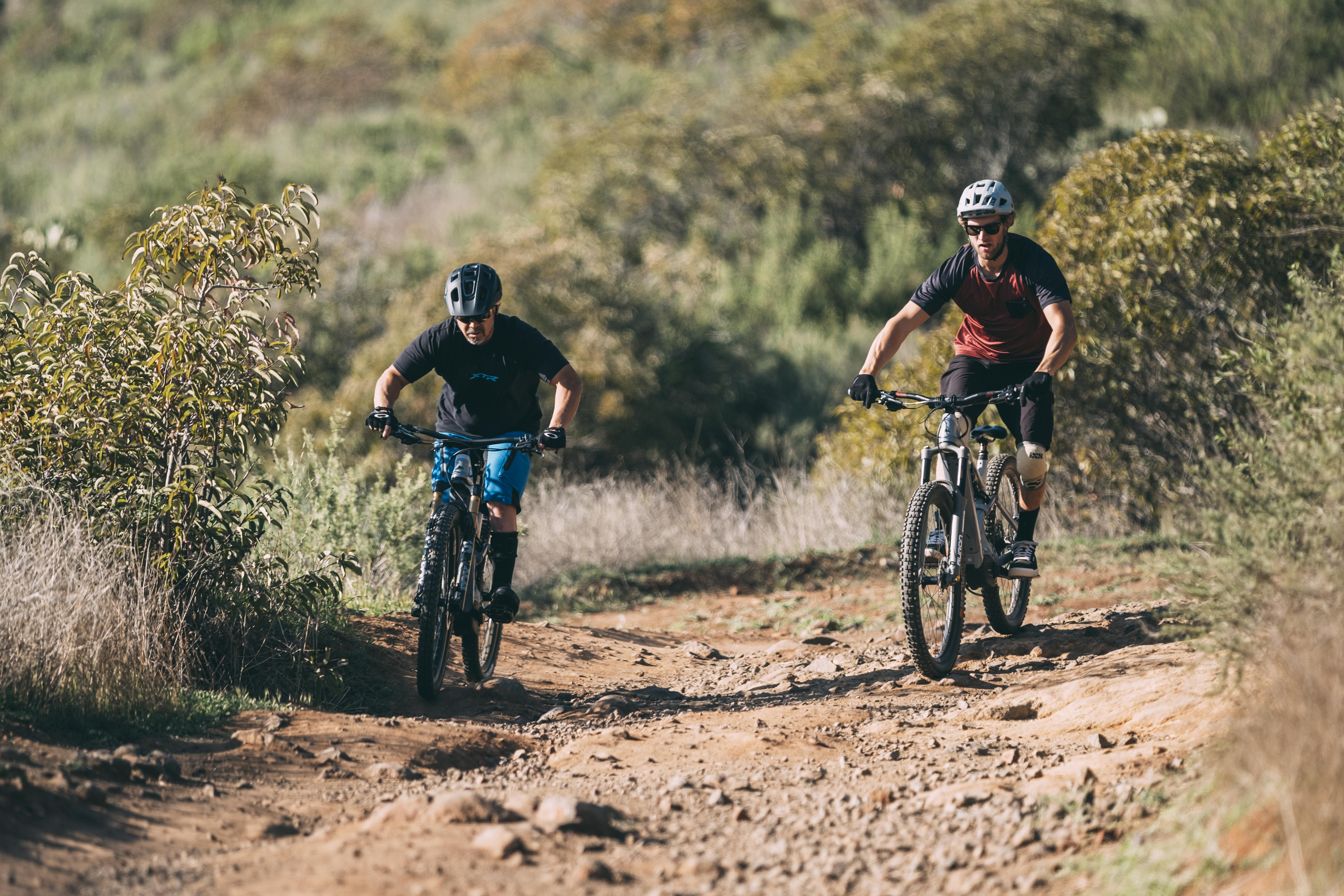
Eddy hasn’t been back to Big Bear since the crash. “I thought about going back and burying the shock pump,” he says. He could go back, it’s just a long drive from his new home outside Phoenix. He moved there to stay with his mother after his injury. Saving money on rent let him spend thousands on PT and rehab. He lives with his partner now, and all that rehab has paid off. It’s not just the e-MTBs that got these guys to the top of this hill, overlooking the lake and watching the sunset, it’s months and years of hard work and dedication. Overcoming the doubts. Pushing through discouraging setbacks. Conquering the invisible challenges that come from realizing that life as you know it has changed forever. Now that their bodies are healed enough to ride e-MTBS, each pedal stroke continues to help them recover not only from their injuries but the day-to-day stresses and challenges of life.
Paul says he doesn’t miss the pressure of competition and constantly having to take risks just to remain relevant. Now, he just gets to ride for fun, and that’s all he ever wants. Eddy says he’s the same way. “I know my limits now, and I can choose not to go past them.” Eddy says he can ride jumps, like the one he hurt himself on, “and I have, but now I can choose not to.” Both of them remind me that they could re-injure themselves, and they know exactly how bad that could be. Riding after a spinal cord injury isn’t guaranteed, and both riders seem to make sure to relish every minute now.
As we cruise back to the parking lot, Paul and Eddy talk about ankle braces. Paul uses a thick plastic one now, because he kept snapping the carbon ones that Eddy prefers. After a while, Paul’s insurance stopped paying for them, so he found a solution that worked to keep him riding without spending thousands per month. They’re not as svelte as the composite supports, but his plastic set can still keep up with him. It seems to work pretty well–he straight up dropped me as we climbed from the lake to the next singletrack section. It was only a short ride–Paul has ridden 40-mile singletrack days on his Canyon Spectral:ON e-MTB–but with only a few miles back to the car he could tap into the remaining battery, switch it into Boost mode and leave me eating dust.
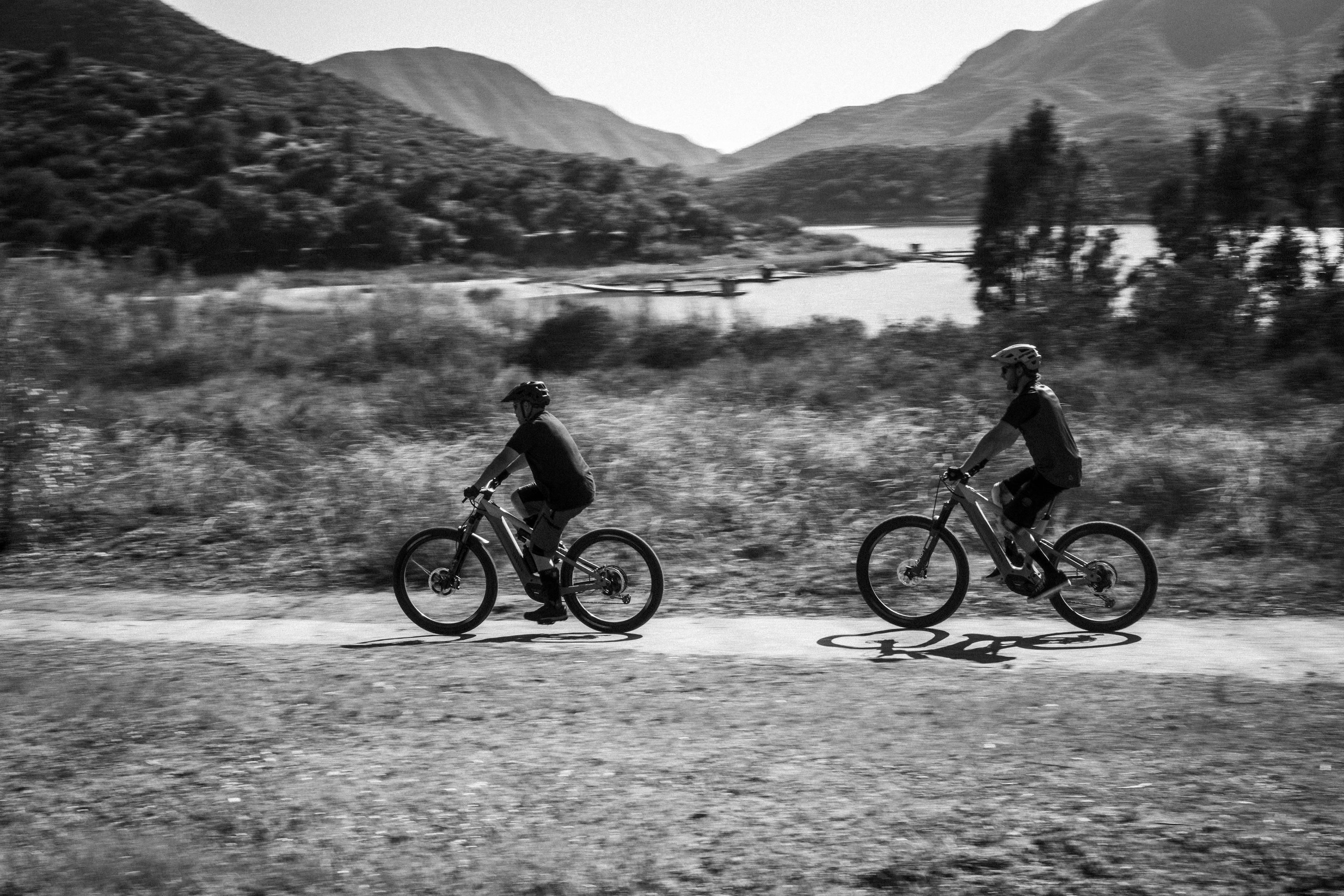
Eddy and I ride back slowly, dodging the after school groms as they bumble through the tiny rock gardens along the lakeshore. Just like two dudes who have spent so many years riding bikes, we talk about how cool the 90’s GT i-Drive was and how we’d like to travel and ride some new trails once it’s safe to fly again. We nerd out on grips and the way you can set up your bike with an app now. Then, when we are done, we sit on the tiled benches and talk about bike races, favorite trails, components and the myriad other topics riders love to connect about.
As we pack up, Paul and Eddy plan another ride the next day. They’re both busy with work commitments and trying to see friends in town. But they manage to coordinate a time and place to roll out. Riding bikes means so many different things for so many of us, and Paul and Eddy are like any other one of us. Our riding and our bodies change over the years, can change in an instant. While most of us will never endure the exact challenges these guys have overcome, whatever it is we have to get through, it’s always better if we go for a ride.
